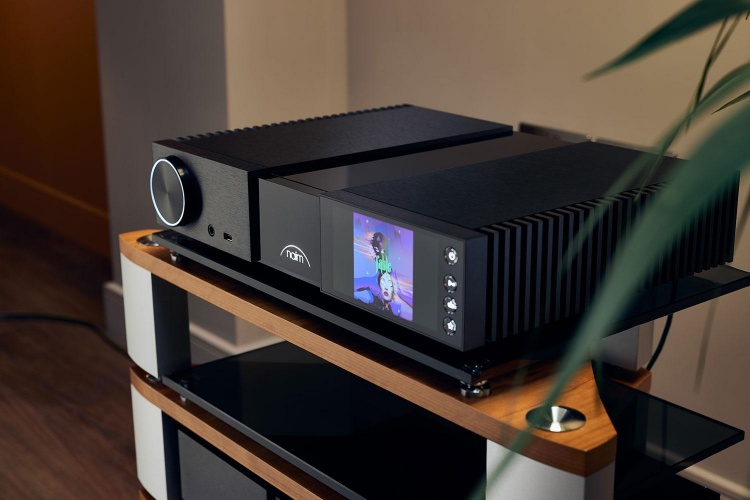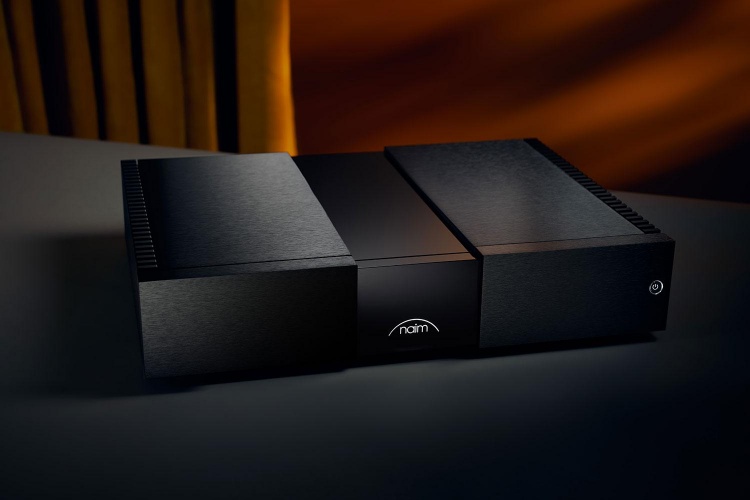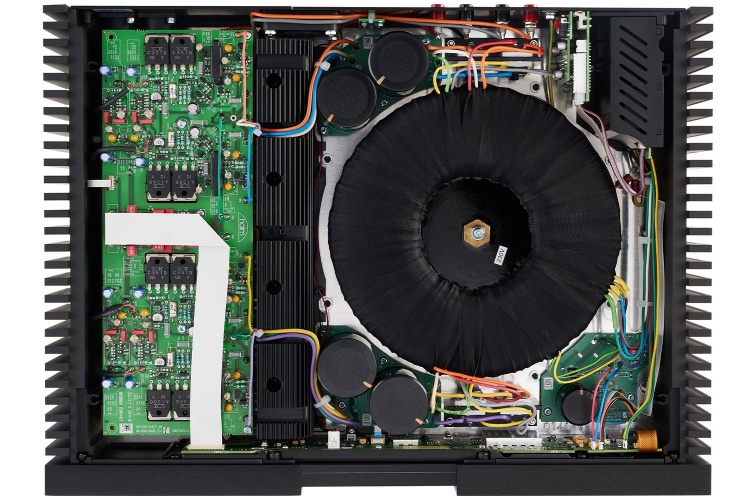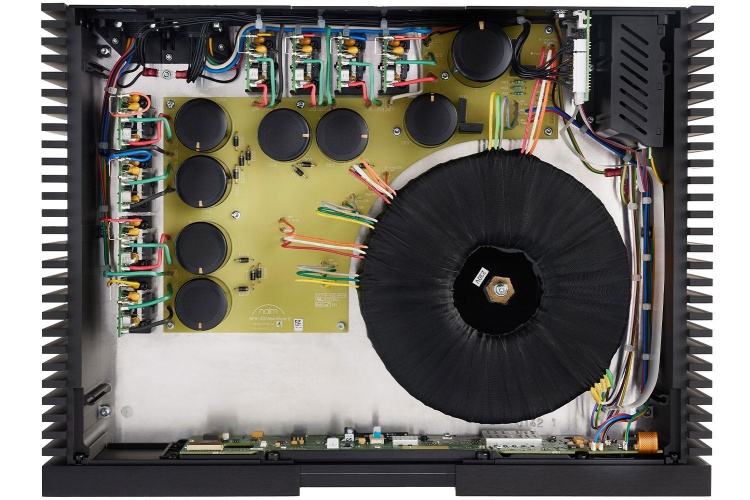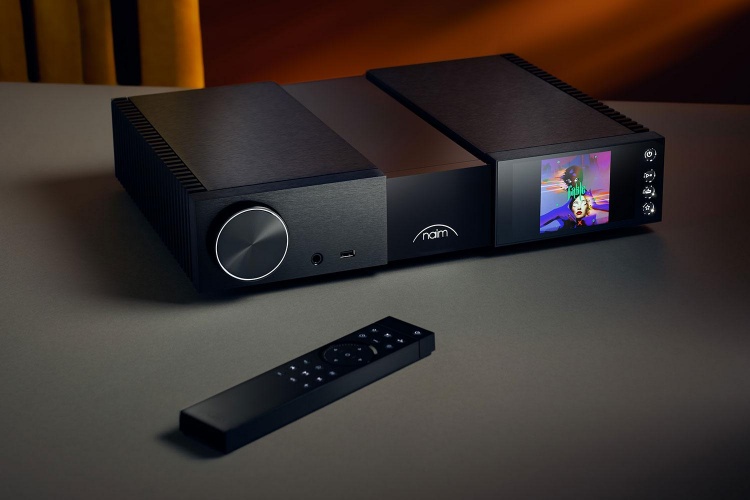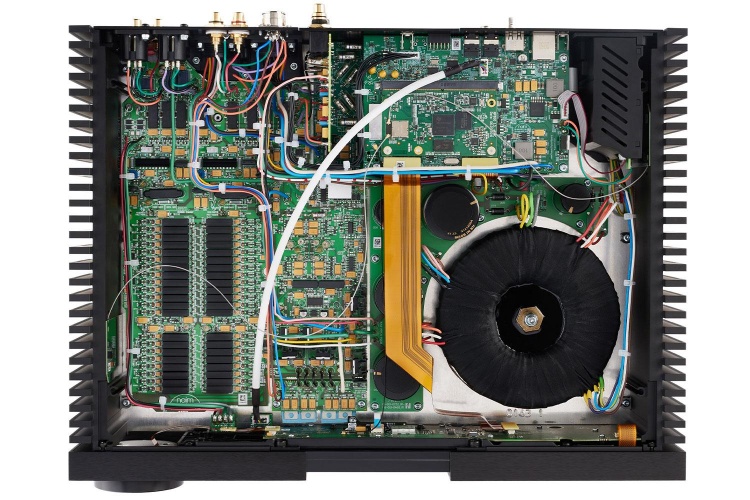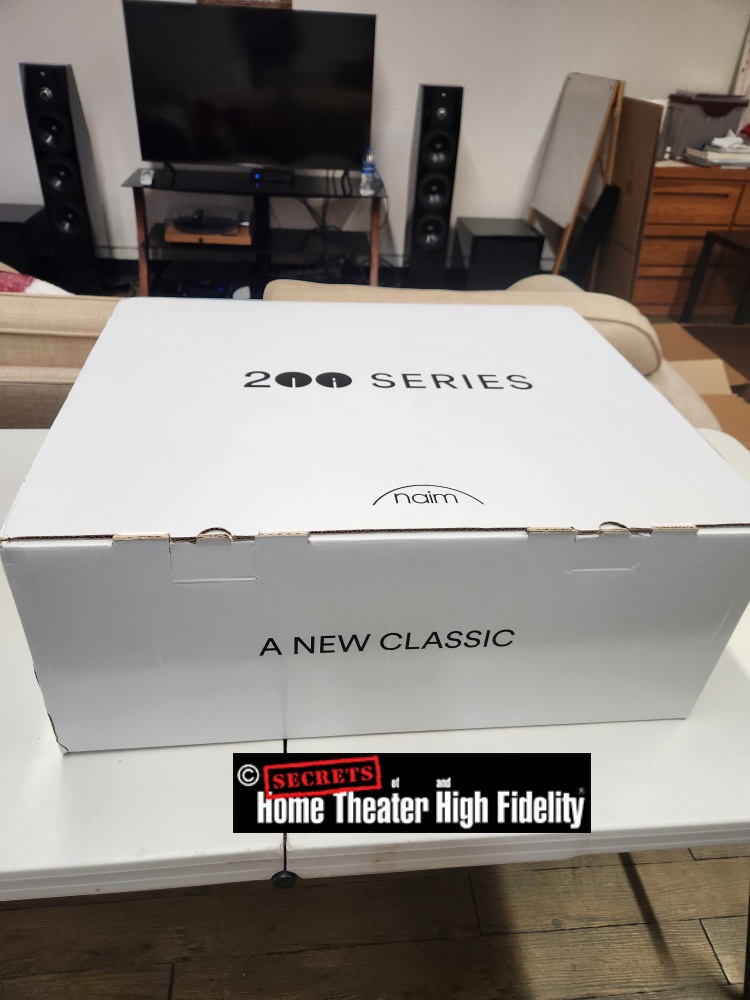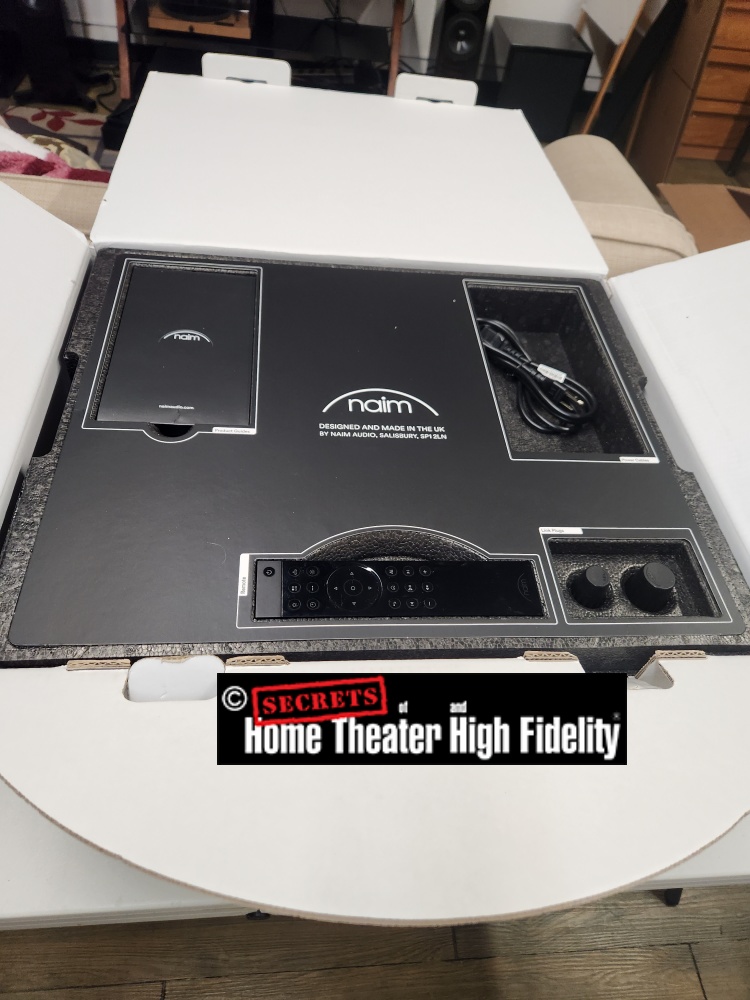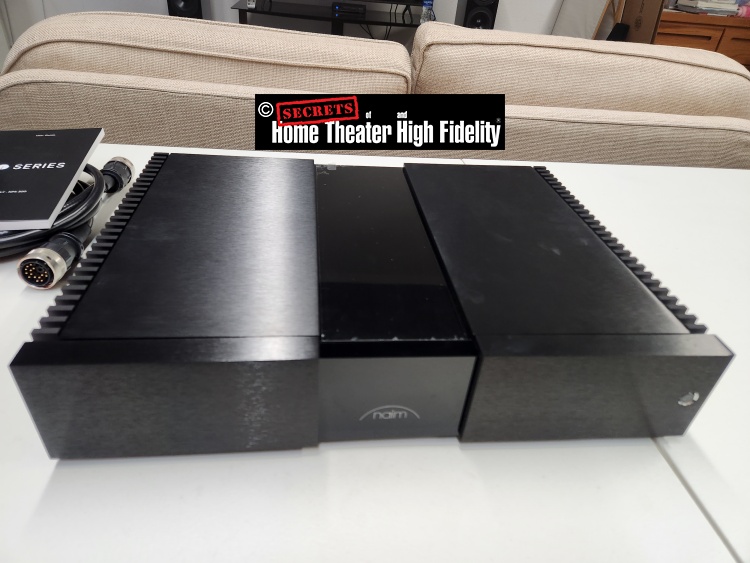Borrowing technology from their ultimate Statement products, these Naim components offer superb build, craftsmanship, and performance for the serious music lover. The New Classic System is designed and developed by Naim engineers in Salisbury, in the United Kingdom.
Beautifully designed and built, the Naim New Classic System is a joy to hear and use. With the superb Naim App, I was able to easily control the system and navigate to my favorite music. The Naim NSC 222 streaming pre-amplifier, NAP 250 power amplifier, and NPX 300 power supply combined to provide me with the most satisfying listening sessions I can remember. I highly recommend the Naim New Classic System. Even if you are not interested in buying or upgrading, take a listen to this combo to experience what your music could sound like.
Naim Audio may not be as familiar to music lovers and audiophiles in the US as in other parts of the world, but Naim Audio is considered one of the UK’s premier audio brands. Established in 1973, Naim Audio is celebrating 50 years of audio excellence by introducing the Naim New Classic System. The New Classic System includes the NSC 222 streaming pre-amplifier, the NAP 250 power amp, and the NPX 300 power supply. Built on the original goal of reproducing music in its purest form, the new products benefit from the continuous pursuit of sonic perfection by the Naim design and engineering team.
NSC 222
Audio Inputs
USB:
2 x USB Type A socket (front and rear -1.6A charge)
Digital (S/PDIF):
2 x Optical TOSLINK (up to 24bit/96kHz)
1 x coaxial RCA (up to 24bit/192kHz, DoP 64Fs)
1 x coaxial BNC (up to 24bit/192kHz, DoP 64Fs)
Audio Input:
1 x moving magnet phono.
1 x 8-pin DIN (compatible with 5-pin DIN cables)
1 x RCA stereo pairLine level inputs (RCA/DIN): Impedance 47k, 2.2 V typical, 7.5Vrms Max
8-pin DIN has +/- 18V for compatible external phono stages such as Solstice NVC TT
Compatible with 5-pin DIN
MM phono:47K/470pF, 5mV, 23dB overload (75mV max)
Audio Outputs
Distortion MM:
< noise floor Line: 0.0025% @2.2V input volume at 0 dB, 1kHz (Line: 0.015% @2.2V input volume at 0 dB, 20kHz) Digital: 0.0035% @ 0dBFS volume at 0dB, 1kHz
Digital Level:
2.1V @ 0dBFS volume at 0dB
Analogue:
1 x XLR pair (stereo XLR balanced impedance 7Vrms Max)
1 x RCA pair (stereo RCA 7Vrms Max)
1 x 6.35mm headphone jack (Headphone 1.5W into 16)
Crosstalk:
MM 90dB at 1 kHz, volume at 0dB
Line 90dB at 1 kHz, volume at 0dB
(Line at 70dB at 20kHz, volume at 0dB)
Digital 90dB at 1kHz, volume at 0dB
Analogue:
Pre-amplifier at max volume at 15.5dB
Phono stage MM 40dB
Signal to Noise Ratio:
MM 80dB ref 5mV A-wtd volume at 0dBf
Line 104dB ref 2.2V A-wtd volume at 0dB
Digital 102dB ref 0dBFS A-wtd volume at 0dB
Frequency Response:
MM:-3dB at 10Hz, RIAA +/-0.1dB
Line: 3Hz to 40kHz -3dB
Digital: 3Hz to 27kHz -3dB
Network:
Ethernet (10/100Mbps), Wi-Fi (802.11 b/g/n/ac)
Audio Formats:
WAV – up to 32bit/384kHz
FLAC and AIFF – up to 24bit/384Hz
ALAC (Apple Lossless) up to 24bit/384Hz
MP3 – up to 48kHz, 320kbit (16bit)
AAC – up to 48kHz, 320kbit (16bit)
OGG and WMA – up to 48kHz (16bit)
DSD 64 and 128Fs
M4A – up to 48kHz, 320kbit (16bit)
Gapless playback supported on all formats
Weight:
24.25lbs
Dimensions:
(H x W x D) 3 5/8 x 17 x 12 1/2”
Mains Supply:
115V or 230V, 50/60 Hz
Power Consumption
Typical use consumption:
25W
Network standby mode consumption: <2W
Standby mode consumption: <.5w
Pre-amplifier
User Control:
App Control (iOS and Android) bi-directional ZigBee remote and front panel
Optical 3.5mm output for synchronized control of compatible products
MSRP:
$8999.00
NPX 300
Naim Logo:
White illuminated.
Connectivity:
Micro USB (update only)
Weight:
31.75lbs
Dimensions:
(H x W x D) 3 5/8 x 17 x 12 ½”
Mains Power Supply:
115V or 230V, 50/60 Hz
Power Output:
Type 3, Type 4
Power Consumption:
Standby <0.5W
Product Type:
Power Supply
MSRP:
$8999.00
NAP 250
Damping factor:
into 8 Ohms 36
Signal-to-noise ratio:
Ref 100W 8 A-weighted 111dB
Signal-to-noise ratio:
Ref 1W 8 A-weighted 91dB
Input signal for clipping:
1V RMS
Peak current into 1 (1kHz 1mS):
+/-28 amps peak (780W peak power)
Burst Power 2:
300W x 2 @ 1% THD+N (1kHz for 20mS, repeat 500mS IHF)
Audio Inputs:
2 x True balanced via XLR, 47k
34k single-ended via legacy adaptor lead
Crosstalk:
60dB
THD+N:
At 2/3rds full power 8 @1kHz (0.013%)
Power Output:
100 Watts 8 @0.1% THD+N (100W @0.1%)
190 Watts 4 @1% THD+N
Frequency Response:
-3dB @ 1.4Hz to 100kHz
Gain:
+29dB
Weight:
37.04lbs
Dimensions:
(H x W x D) 3 5/8 x 17 x 12 ½”
Power Mains Supply:
115V or 230V, 50/60Hz
Power consumption:
Passive consumption: 26W (idle)
Standby consumption: <.5W
Product Type:
Power Amplifier
MSRP:
$8999.00
Website:
Company:
SECRETS Tags:
audio systems, audio equipment, naim audio systems, naim reviews, naim audio systems reviews
The New Classic NAP 250 amp will strike familiarity with audiophiles. Originally designed in 1971 and introduced in 1973, the NAP 250 was the first consumer home audio product from Naim Audio. I would say that the original NAP 250 became a landmark and a legendary product. Stepping out of the enormous footprints of the original and subsequent efforts, the New Classic NAP 250 offers some striking differences.
There are more than a few refinements that separate the original NAP 250 and the New Classic NAP 250. Utilizing a class A/B topology like the original NAP 250 which had 80 watts per channel, the new NAP 250 now offers 100 watts per channel into 8-ohms. This makes the New Classic NAP 250 the most powerful NAP 250 ever. The New Classic NAP 250 also has a “smart” fan to help with thermal regulation. The fan has 8 different speeds, so as the unit heats up, the fan will adjust to keep the music playing. Party on, Garth!
The New Classic NAP 250 also has true balanced inputs. This is a first in Naim’s 50-year history. Wrapping or dressing the amplifier (and the other New Classic System components) is a beautiful, thick aluminum case. This is just not for looks because Naim has long used aluminum to help isolate the electrical circuits to improve sound quality. Inside the case, the New Classic NAP 250 features the highest quality components, including the power transistors found in Naim’s Statement amplifier. What impresses me greatly is the experience and commitment Naim demonstrates in these products. It is Naim’s implementation of their design goals and the superb engineering that results in the performance that goes beyond mere measurements and parts quality.
The NPX power supply has 2 thick Burndy cables, and they connect to the back of the NSC 222 streaming pre-amplifier. My question to Naim Audio immediately was, why use two cables to connect the power to the NSC 222? Most electronics have one cable to connect to the power supply. The answer from Naim product specialist Thomas Graham was this: “The NPX 300 power supply has two Burndy cables because one is dedicated to the analog portion and the other is dedicated to the digital portion. They have different voltages, and this design is taken from that of the ND 555 streamer, our reference digital source.”
Impressive! This statement shows that Naim has taken a path that is guided by respect for not only the music but the circuits and what the needs are for the given circuits. This also shows the lengths that Naim will go to get all the music into your home.
The heart of the New Classic System is the NSC 222 streaming pre-amplifier. The NSC 222 is a full-feature pre-amp that features analog inputs (1 RCA, 1 8 pin din) including a moving magnet phono stage, and digital inputs (2 Optical, 1 coax RCA, 1 BNC, 2 USB).
Secrets Sponsor
The NSC has RCA outputs and Balanced XLR outputs. On the front panel, the NSC 222 has a headphone output suitable for a 6.35mm jack. Most importantly for many consumers today, it is a streamer with an exceptional DAC. For control, the NSC 222 has a large rotary control for volume, four lighted touch buttons on the right side of the unit, and next to them a 5.5-inch color LED screen. The buttons allow the user to directly select inputs and the rotary dial to adjust the volume. Most folks I think will opt to use the Naim app on their mobile device like I did to control the NSC 222.
Once I downloaded the Naim app, and opened it, the app located the NSC 222. Selecting the NSC 222 will turn the NSC 222 on and if you connect the optical control cable to the NAP 250, it will enable the NSC 222 to control the NAP 250 amp as well. After you select the NSC 222 on the app the app will give you a page with icons to select input or streaming channel of your choice. I easily found the Qobuz icon and once I logged in, I was able to select the music I wanted to hear. The app is beautifully designed, and I found it easy to navigate inputs and control volume through the app. The Naim system is complex, but the system control makes operation easy.
Let me begin by saying that at the outset, I was aware that I had something very special. The Naim system arrived at my place in three large and heavy boxes. I had my audiophile friend Matt help me with the unboxing and the set-up. I took out one of my folding tables to complement the one I already have for work to lay out the equipment and the cables and supplies I would need to use for set-up.
As we unboxed the units, I noted the care that went into the packaging. I appreciated the aesthetic look of the outer and inner boxes. As the components were lifted out of their packaging, I noted how solid and beautiful the casework was. The components are also heavy, in part because of the solid aluminum outer case, but also due to the large transformers inside the components.
The three components, the NSC 222 streaming pre-amplifier, NAP 250 amplifier, and the NPX power supply sitting side by side on the worktable had a neat, clean, and handsome look to them. When I powered them up later and the Naim logos lit up, it took my breath away. They had a simple, beautiful, classic appearance that is instantly recognizable and a look that could grace the finest systems.
The Naim Classic system comes with everything you need to wire up your system, save for the speaker wires. Naim provided their high-quality balanced interconnect which I used between the NSC 222 streaming preamplifier and the NAP 250 amplifier. Naim also provided an optical cable for control between the NSC 222 and the NAP 250. Next came the speaker cables. When Matt and I first looked at the back panel of the NAP 250, we noticed that the NAP 250 only accepts banana plug terminals. Fortunately, most of the speaker cables I use have banana termination. The prospective buyer should prepare for this in the event they decide to take this amp home. I connected the NAP 250 to the NHT C4 tower speakers I have on hand. NHT C-4 Loudspeaker and CS-12 Subwoofer Review – HomeTheaterHifi.com I followed Naim’s recommendation in their well-written manual to place the NSC 222 on a shelf above the NAP 250 amplifier.
Next came the NPX 300 power supply. The system came with 2 thick Brundy cables, both of which connect to the NSC 222 streaming preamplifier. Why two cables? All other power supplies I have experience with only use one. I asked Naim about this and in the design section of this review, I have their answer. Now the two Burndy cables have a band on one end, and this is the end that needs to be at the NSC 222 Streaming Preamplifier. Once each of the Burndy cables was attached, I attached the power cords to the NAP 250 amp and the NPX power supply and powered up the units.
I connected an Optical cable from the TV to the NSC 222 streaming preamplifier so we could make sure we could hear sound. Opening Amazon Music and finding Lee Ritenour’s Dreamcatcher album, I was able to take a quick listen. Matt and I nodded our heads in agreement that the sound was superb.
My next task was to download the Naim App. Once installed, I opened the app and in the My Devices window, the NSC 222 popped up. I selected “NSC 222.” From the Naim App, I found I could not only select from Naim Radio, Deep Vibes Radio, Radio Paradise 320K, Classic FM, and KCRW 89.5 Eclectic 24, but I could also select input, control the pre-amp volume, and TIDAL and Qobuz icons were there ready for action, too. I have a Qobuz account, so I was able to easily log in.
Easy… I want to take a moment here to express something that delighted me. I have owned and reviewed and or connected or put together lots of audio equipment in the past. One would think that as you spend more money, the equipment should be easier to put together and operate. Too often, it is a struggle to put things together and have everything work properly.
Sometimes it is frustrating and hard. Hard like trying to garden in San Antonio. Where I live the ground is full of rocks. Add in the drought conditions of the past few years and you have really hard ground. Picture a determined wife, 130 pounds of feminine grit, using a motorized auger and spinning around like a rag doll on it, trying to dig deep enough for her roses while I’m using my hands on a pick and shovel. It’s like I’m on a chain gang hard.
Secrets Sponsor
Now on the other hand the Naim Audio system is easy, simple, and beautiful. Every time I open the Naim App the system turns on, I find my input, and music plays. No annoying ticks, no wait time, the Naim is ready when I am. It works every time and then goes to sleep when I stop playing. In operation, I will say that this is the most satisfying high-end system that I have encountered. Thank you, Naim.
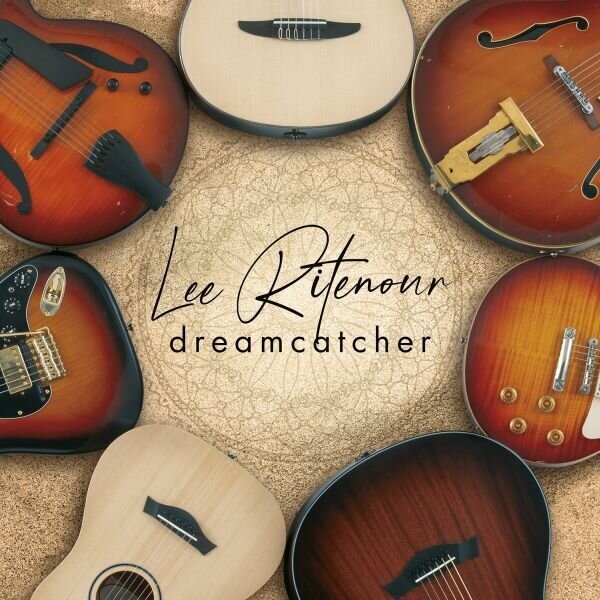
Lee Ritenour “Dreamcatcher”
Right away, the NSC 222 demonstrated impressively its prowess on streaming media. Matt and I had taken a quick listen to Lee Ritenour’s Dreamcatcher when we first set up the system. What stood out to me then was the clarity and outstanding inner detail. Listening more closely to the NSC 222 streaming from Qobuz, the sound took on more of a dimensional aspect I had not heard before. It was as if the images produced were more palpable. The speakers and the system just evaporated, it was just Lee Ritenour and guests playing before me. The sound stage was deep, and it sounded as if I had a surround system operating, not just a stereo system. I was so stunned at the difference that I had to call Matt back so he could listen, too. As I kept listening to the second track, Charleston, I was rocked out of my seat when the bass drum hit. Then I noticed how full and deep the bass guitar was. In this recording, Lee Ritenour plays different guitars on different tracks. Being a guitar player, I could not only hear the differences in the guitars, but also the type of strings used, whether they were phosphor bronze or steel, or nickel wound. I had never heard this kind of detail from the NHT C-4 speakers before. Overall, the lasting impression was of how long the guitar strings resonated as they floated notes and sonic images in the air.

The Turtles “You Baby”
Just for fun, I decided to find the Turtles on Qobuz after a conversation with Matt. Something about which group did a song with a refrain “Is it any wonder?” The title track was one of my favorites as a youngster. On this album, I had a choice of mono version or stereo of You Baby. I chose mono. Then as the music played, I had my socks blown off!
The song begins with an up-tempo, snappy rhythm played by the drummer with the rhythm guitar and bass following before Mark Volman’s distinct vocals. The Naim New Classic System playing through the NHT C-4s captured the snap and timing so well, it was infectious.
There was a dynamic, pulsating propulsion to the music. It got me dancing in my seat and then suddenly I was catapulted back to the late 1960s. It brought back memories of my 8th-grade crush, Kim. A freckled-faced, sandy-haired blond girl resplendent in a plaid mini-skirt, fishnet stockings, and white go-go boots dancing to the beat. I knew at that moment, in my heart, that Rock and Roll would never die!
Collecting myself, I realized that what I was hearing was the incredible ability of the Naim New Classic System to convey the timing and rhythm of the music viscerally. I remembered what my first guitar teacher told me. “Don’t worry so much about the notes or the chords, he said, the beat, stay on the beat.” The beat is what music is about. When do the notes come in? When is there silence? The Naim New Classic System insightfully reproduces dynamics but mostly keeps the beat.
As a reviewer and an audiophile, I realized that I get too caught up in details. Like how something images, how is the soundstage? Can I hear the air conditioner cycling below the piano in the studio? These little details can add to the enjoyment of listening to music, but the beat, the rhythm, and the timing of the music or musicians are what make the listening satisfying, and soul-stirring.
It brings life to the music. It makes music sound not so reproduced, or manufactured. It’s the ability of a system to give the music that sense of beat that makes it sound more life-like. With the Naim New Classic System, the music absolutely sings the beat. More than any other system I have heard, it brings to the listener the pulse of the music.
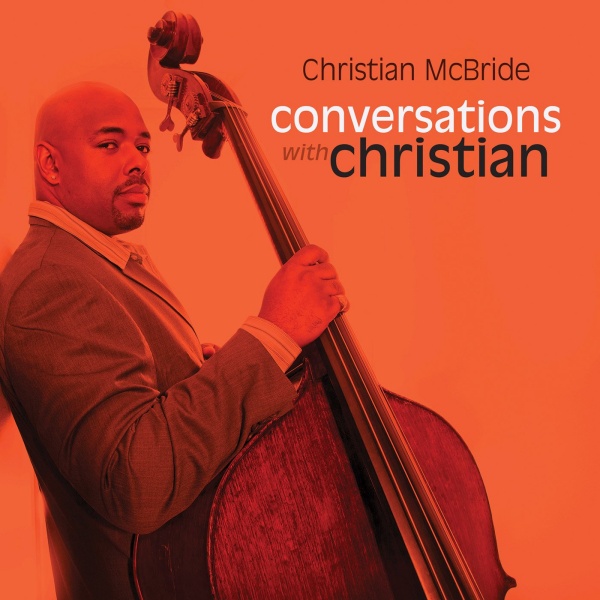
Christian McBride “Conversations”
My friend Matt had just gotten back from the Chicago AXPONA 2023 and he introduced me to this track that was being used as a demo, It’s Your Thing on the Christian McBride album Conversations. He was very interested to hear what this sounded like on the Naim New Classic System. I played string bass in high school and college orchestra so I was interested in how the system would handle the instrument.
The recording is close-mic’d and intimate. Right from the start I felt the snap of the bass strings on the fret. I could tell that Christian McBride was in a righteous mood. It was as if he was going to slap those strings right off the bass. Vocalist Dee Dee Bridgewater matched McBride’s energy with a sassy attitude on the vocals. If you are feeling down or low, this song on the Naim New Classic will wake you up. As the song progressed, I was totally impressed with the reproduction of the bass instrument. It had the proper weight, and the tonality was spot on. I thought this was the best bass reproduction I had heard on the NHT C-4s.
I took the opportunity to connect my Grado SR225 headphones to the NSC 222. The output to the speakers turned off and the sound came through the NSC 222 front panel headphone jack. This recording is well suited to headphone listening. The intimacy of the musicians gets you really close to the music through the headphones. Owners and lovers of headphones will enjoy their music on the NSC 222.

Me and My Friends “Look Up”
This is another album that Matt heard at Axpona 2023. I liked the Reggae flavored, snappy music and the deep bass tones. We decided to do a Spinal Tap like experience, and I turned up the volume to number 11? Well, Matt and I are older gentlemen, and we do like to protect our ears, but it was loud. I had to step out of the room and attend to some customers on the store floor while we were listening. (The sound system is in a large office next to the floor of my beauty supply store.) Outside the listening room, I could hear the percussive bass, no feel it on the counter and shelves. I thought to myself wow, this reminds me of a phrase used here in South Texas. The Naim NAP 250 amp “es un chignon con cajones”! Now I wouldn’t normally say that, but my friend Raoul would. He grew up on a farm outside San Antonio and knows how to take care of rattlesnakes by grabbing their tails and whipping them in the air. Yeah, he would say that.
Cajones roughly translated means balls, but really, it’s much more. It means power, authority, strength, and energy in a masculine way. This phrase came to mind because the Naim NAP 250 didn’t strain, sound congested, or even was physically hot to the touch when pumping out the music. The Naim NAP 250 was like a big, masked wrestler, like El Santo. The Naim amp grabbed ahold of the NHT C4 speakers and pushed out whatever the music needed out of them. No problemo, with the Naim NAP 250. When I came back into the listening room, I informed Matt that I had not hooked up the subwoofers to the NHT C4s. His jaw hit the floor. The Naim NAP 250 amp used with the NSC 222 is “un chignon” with “cajones”.

Gordon Lightfoot “Gord’s Gold”
Gordon Lightfoot passed away as I was working on this review. When the news of his death came, I had to pull out my collection of cherished albums by Mr. Lightfoot. Gord’s Gold is a two-disc compilation of his touching, soulful songs, and it was the first vinyl that I heard on the Naim New Classic System. As I lowered the stylus it was apparent before the music played how quiet the Naim NSC 222 phono stage is. Listening to The Minstrel of the Dawn I immediately heard low levels of detail not heard before. There was an easy, lovely quality to the sound of Gordon’s voice. The guitar, drums, and bass along with the strings are all clearly resolved.
When the music ends, there is dead quiet. As the record played, I thought the Naim New Classic system conveyed the soul and beauty of Gordon’s voice, music, and the accompaniment of the instruments. The guitar, especially, was rendered in an insightful, precise, and glorious way. My Rega RP6turntable/Exact cartridge is usually connected to a Rega Aria phono stage in my all Rega system. However, I thought this was superb reproduction from the Naim NSC 222 internal phono stage. So good it would be hard to beat with a more expensive external phono stage.
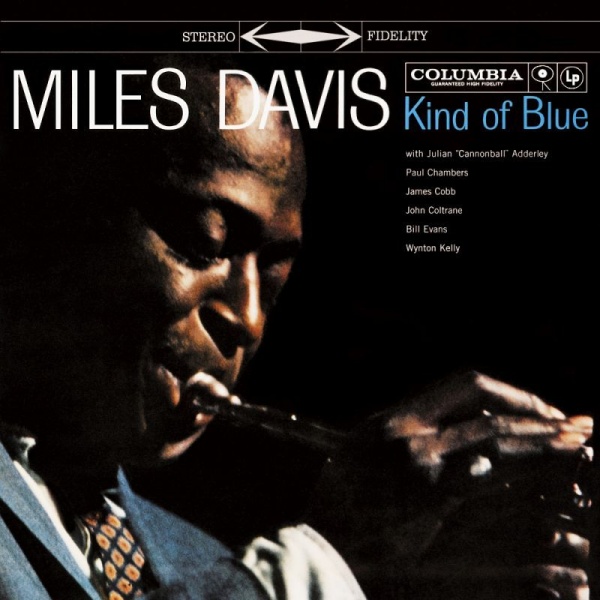
Miles Davis “Kind of Blue”
For my final bit of vinyl listening, I chose one of my favorite albums on Mobile Fidelity 45rpm. The level of the recording and the remastering were immediately apparent. On the track, So What, I was impressed with how palpable the images were of the piano, bass, drums, and horns. By the time Miles Davis’ solo blasted through I was marveling at the solidity, weight, and authority the Naim New Classic System brought to the sound. I have never heard the NHT C4 speakers sound this good, nor imagined they could sound this good.
As my listening session eased into the Freddie the Freeloader track, I was so struck by the sheer impact and size imparted by the system that an improbable thought crossed my mind. To me, the sound generated by the Naim New Classic System made the NHT C4s sound like big horn speakers. And I mean this in a good way because the NHT C4 speakers have some very good qualities. However, I just had the impression that I was listening to 15” woofers and large horns, not 6” woofers and metal domes. The sound seemed life-sized or life-like. No doubt, this is the best I have heard my 45rpm LP of Kind of Blue sound. Truly impressive sound from Naim.
The Naim New Classic System offers superb music reproduction and awesome build quality at a price within reach of many music lovers.
- Beautiful, sturdy outer case
- Ease of operation, especially through Naim App
- Excellent reproduction of the timing, and rhythm of music
- Superb clarity of reproduction
- Excellent control and extension of bass notes
- None
There is a touch of history here. When you gaze upon the Naim Audio New Classic components, you get the sense that you are looking at a bit of rich tradition. These are audio components that link you to the past and into the present. The established goal of sonic perfection and the steady struggle to achieve this goal is ever present in these components.
Growing up I developed a fascination for music reproduction and the equipment that produces music. I remember as a kid, I used to dream of owning one of the nice Marantz receivers during the 1970s. I loved the way they looked, their solid feel, and the wonderful sound they produced. I was a kid and so I really couldn’t afford one of the Marantz receivers then. But I told myself, “One day, I will own one of the Marantz receivers.” Today I am telling myself the same thing, except it is “One day, I will own the Naim New Classic System. One day.”




